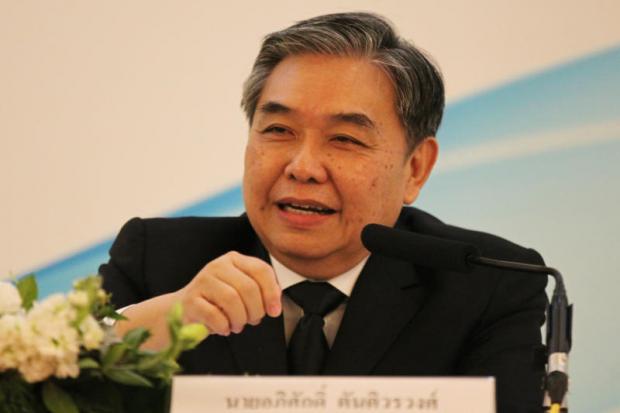
The government is taking aim at balancing the budget in the next decade, with minimum annual economic growth of 4% viewed as a key means of achieving that goal, says Finance Minister Apisak Tantivorawong.
Growth of 4% is in the lower band of the country's economic growth potential, he said, and is key in helping the government's budget strike a balance after running deficits for nearly 20 years.
Tax-collecting efficiency is another factor to help reach a balanced budget, said Mr Apisak.
The government has run budget deficits since fiscal year 1999, with the exception of 2005 and 2006. The Finance Ministry is eager to curb the deficit to strengthen its fiscal position as a cushion for any economic crisis that could erupt. But the government's hefty investment plan to finance big-ticket infrastructure projects, particularly the transport system, has added to concerns over the budget deficit and public debt.
The 2018 budget is set at 2.9 trillion baht, with 2.45 trillion in revenue, leaving a deficit of 450 billion. That deficit swells to 550 billion baht if the 100-billion supplementary budget is taken into account.
He said the public-private partnership (PPP) scheme, expected to contribute 20-25% of the planned state investment in infrastructure projects, and Thailand Future Fund (TFF), which represents 5%, will help prevent public debt from surging.
Even though the government's mega-infrastructure plan is expected to raise the country's public debt to 48-49% of GDP in the next 4-5 years, it is well below the Finance Ministry warning level of 60% under the sustainable fiscal framework.
Separately, Mr Apisak said the possible trade stand-off between the US and China will have a minor impact on the Thai economy as the country's economy has been diversified.
In the meantime, he said a number of low-income earners living under the poverty line, set at 30,000 baht a year, will be used as a key performance indicator in evaluating the government's welfare and subsidy scheme for the poor.
Under the second phase of the scheme, aimed at eradicating the root causes of poverty, the government has assigned state officials from related agencies to individually discuss and design personalised plans with low-income earners to help them escape poverty.
Around 5 million out of the 11.4 million recipients of the government's welfare and subsidy scheme are living below the poverty line. The cabinet in January approved 35.67 billion baht for the second phase of the welfare and subsidy scheme.